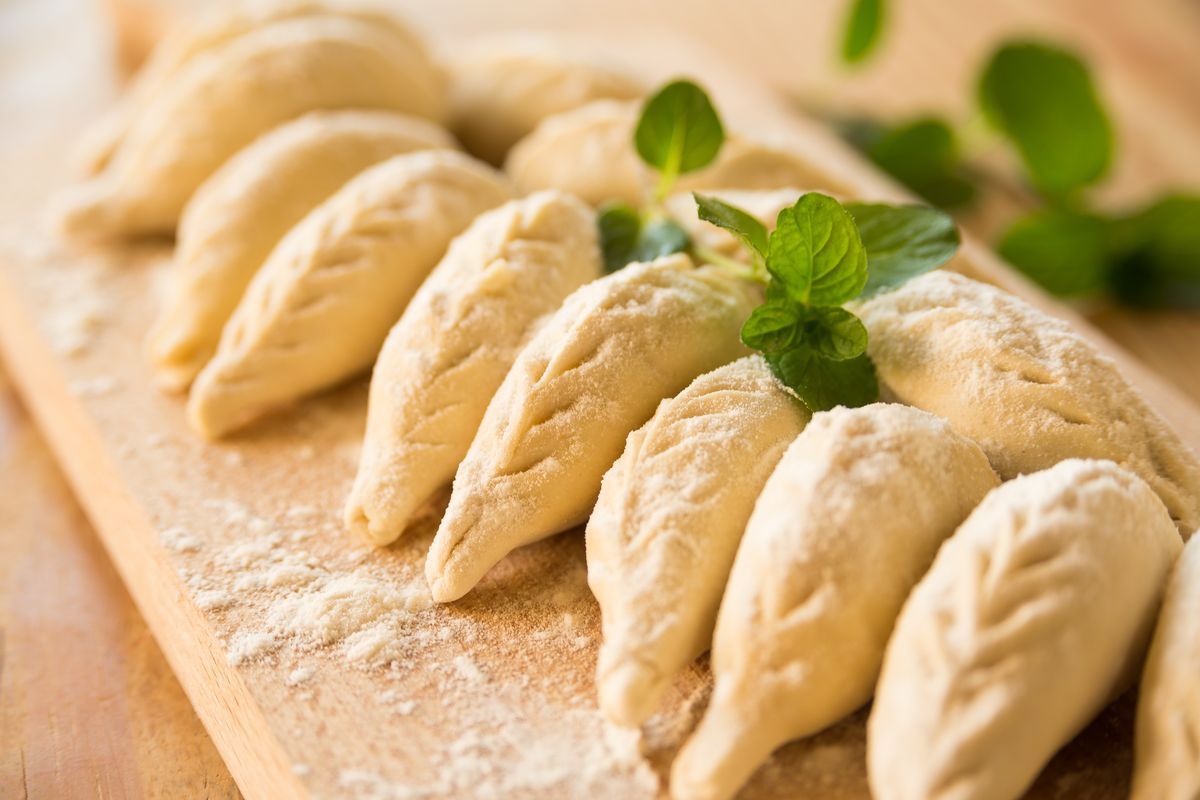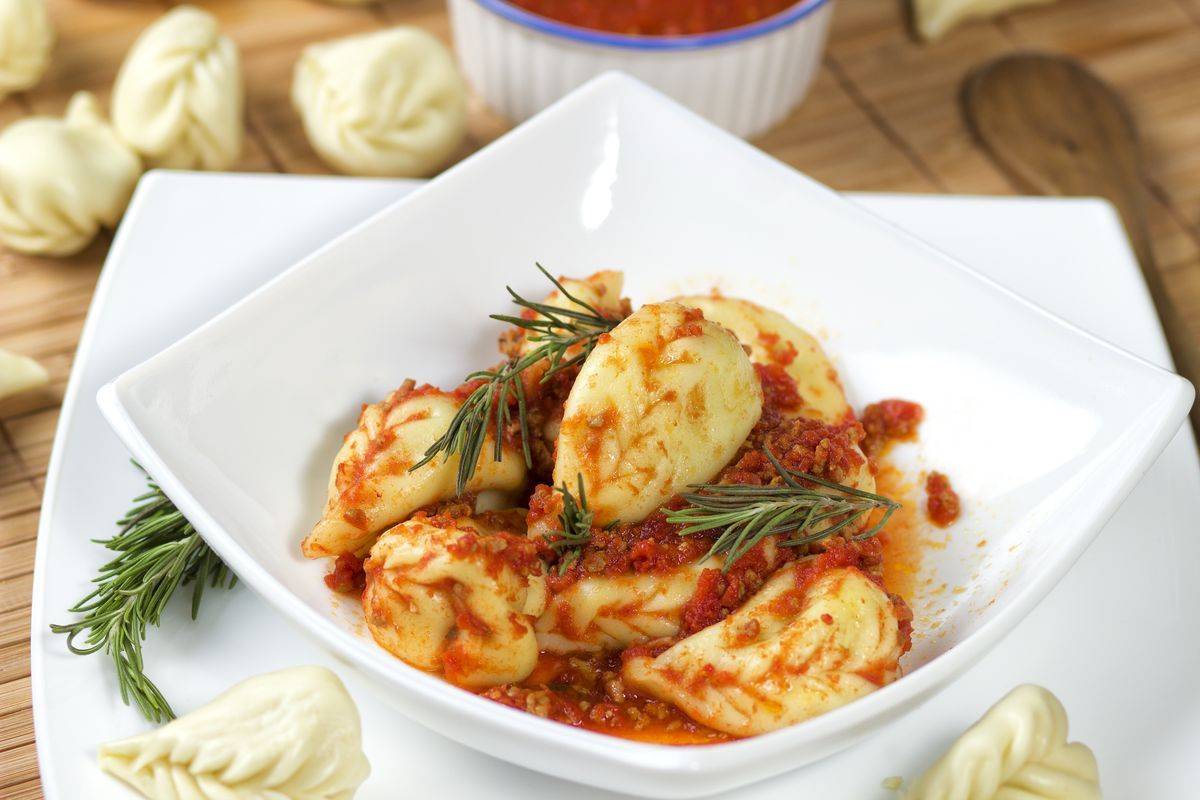Recipes
Potato culurgiones: the recipe for typical Sardinian pasta


Culurgiones are a stuffed pasta from Sardinia prepared with potatoes, pecorino and mint. Here is the original recipe, tips on how to close them and what is the best seasoning to serve them.
Today we are going to discover a fantastic Sardinian dish, potato culurgiones, a typical pasta from the Ogliastra area, which is prepared with flour and re-milled semolina, and then formed into ravioli stuffed with a filling made up of potatoes, Sardinian pecorino and mint. A peculiar characteristic of this traditional recipe is the shape of the ravioli, which resembles an ear of wheat .
If you want to prepare a truly delicious first course and amaze all your dinner guests, then what are you waiting for? With this recipe the result is guaranteed! Let's see how to make these wonderful Sardinian ravioli, which condiments to use and what the fascinating story behind the dish is.

Preparation of Ogliastra culurgiones
- Let's start with the filling: boil your potatoes in boiling water until they are soft. Peel them and mash them in a bowl with a fork or potato masher. As soon as you have a sort of puree, let it cool for 10 minutes.
- In a pan, heat 3 tablespoons of oil and the garlic clove, starting from cold. As soon as it starts to sizzle, turn off and leave to infuse.
- Once the potatoes are cold, add the grated Sardinian pecorino, salt, pepper, mint and garlic flavored oil. Let the filling rest (even a couple of hours).
- Let's move on to the pasta. In a bowl mix the re-milled semolina with the 00 flour, then add the water and the oil poured in slowly (or equal weight of lard) and begin to knead everything. When the mixture is already quite homogeneous, spread a layer of flour on your work surface and knead vigorously for another 5 minutes. Let the dough rest wrapped in a sheet of cling film for at least half an hour.
- After 30 minutes, roll out the dough with a special machine and cut out disks with a 9cm diameter pastry cutter.
- At this point, fill the disks with a spoonful of filling and try to give your ravioli the typical shape similar to an ear of wheat, taking the dough at the ends and pinching it to seal it well at the base. Try to repeat the operation until the end, bringing the ends of the dough to one side and then to the other. We leave you some more tips and the video of this step below.
- Once ready, cook them in boiling salted water for about 5 minutes.
The mastery of Sardinian women in flour processing and pasta preparation is also evident in other typical shapes of the island such as lorighittas
How to close culurgiones
Closing the culurgiones into spikes in order to obtain a drop-shaped ravioli is undoubtedly the most difficult part of the recipe , especially if you are not local. Seeing them closed by the hands of skilled Sardinian housewives seems like child's play and one cannot help but be fascinated. However, obtaining a perfect ear of corn is not easy, which is why we thought we would leave you a video where the process is explained step by step. Don't worry if the first few aren't perfect, you'll see that by acquiring a little manual skill everything will be easier.
Culurgiones: the sauce for ravioli
Now let's see some ideas to best serve this dish! Here are the best condiments.

• Culurgiones with sauce Usually these ravioli are served with a tomato sauce, which refreshes the palate and degreases the mouth. To prepare it we recommend the following ingredients: 500 g of tomatoes, which you will need to blanch quickly and remove the skin, 1 clove of garlic, extra virgin olive oil, basil, salt and pepper.
Cook the sauce for at least fifteen minutes, until the tomatoes have practically melted, and finish the dish with grated pecorino cheese just as tradition dictates.
• Culurgiones butter and sage. Simple and effective, heat the butter with the sage in a pan and add salt and pepper. When the butter has melted and has taken on a golden hue, sauté the ravioli with a little cooking water . Stir in plenty of pecorino cheese.
These are just some ideas for preparing the sauce for Culurgiones. You can choose your favorite because these Sardinian ravioli are delicious in every way.
storage
The uncooked culurgiones can be stored in the refrigerator for a couple of days. Spread them out on a floured tray and cover them with a cloth. Always spread out on a tray, they can be frozen and, once hardened, distributed in already portioned freeze bags. They last for 3-4 months. Cook them from frozen in boiling salted water.
History and origin of culurgiones
Let's start from the beginning: what does Culurgiones mean? There are two hypotheses about the origin of the name. The first identifies the root of the term in culleus , a leather bag typical of the region, while the second in cuna , which means cradle, ravine .
The first written trace of the dish dates back to 1811 where they are cited as "culurgionis de casu" or cheese. In fact, we must keep in mind that these ravioli are an agri-pastoral product , made with what the region had to offer: durum wheat flour, potatoes, pecorino cheese and mint, the same ingredients foreseen by the PGI mark obtained in 2015. Fiscidu is also permitted , a particular cheese in brine.
Consider that in some areas of Sardinia, to be precise in Ulassai, until the 1960s they were only prepared once a year on the occasion of All Saints' Day . On the day of the dead it was customary to leave a saucer to honor the deceased, to protect oneself from mourning and ward off the evil eye. In other areas they were considered a dish for special occasions and prepared in conjunction with harvest festivals. This explains the particular spike closure.
How many types of culurgiones are there?
Country you go, culurgiones you find. As often happens with traditional recipes, even in this case the basic recipe has taken on different characteristics depending on the area. The most famous are the Ogliastra culurgiones , the ones we proposed with potatoes and mint. The addition of garlic is typical of the coastal area while in the inland mountains, fried onion is preferred.
The culurgionis from Gallura , on the other hand, are flavored with orange or lemon zest while those from Barbagia are filled with only pecorino cheese and are served with tomato sauce, diced pork or sausage.
In Campidano they are filled with sheep's or goat's ricotta, eggs and saffron, sometimes enriched with spinach, chard, pecorino and nutmeg. A simple sauce of fresh tomato, basil and chilli pepper is used as a condiment. To conclude, in Baunei they have the classic shape of ravioli.
Riproduzione riservata © - WT












